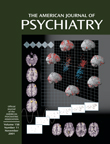This book is a concise compilation of the latest findings regarding the diagnosis and treatment of dementia. Roy Jones successfully reviewed a number of publications in geriatric medicine, neurology, psychiatry, and other fields to compile the book. The scope of the book includes epidemiology, diagnosis, evaluation of treatment response, drug treatment for cognitive and behavioral symptoms, and other issues that govern use of drugs in these patients. This pocket-sized book was written for doctors working in primary and specialty care, but it will be most useful for primary care physicians, residents, medical students, and nurses. It is easy to read, with judicious use of epidemiology and research findings, and clinicians will find it practical and useful. This review will describe the book’s highlights and key contents and will make suggestions for future editions.
The book offers much practical information for clinicians, particularly those who would like to read a quick summary of information on a given topic. The organization of material is generally helpful in terms of the style, organization, and methods of communicating information. The cover is attractive and tables in chapters 1 and 2 are efficient in summarizing symptoms, diagnostic criteria, and epidemiology of dementia. Chapter 3 has a concise summary of scales used to identify and monitor cognitive deficits and problems with activities of daily living in preparation for and in response to treatment. Chapter 4 has a concise review of the pharmacology and clinical trials of acetylcholinesterase inhibitors and other medications being evaluated for use in dementia.
The book succeeds in outlining many important issues that provide the context for good clinical care. The principle of evaluating a patient’s baseline and continuing evaluation (e.g., with scales) is clearly outlined. The author also addresses when to start and stop therapy, use of guidelines and treatment protocols, ethical issues, and pharmacoeconomic considerations. In addition, psychosocial interventions and treatments for behavioral symptoms are reviewed; these interventions are critical because behavioral symptoms are the strongest determinant of institutionalization. Finally, aspects are offered in chapter 7 to address common medical problems that affect symptoms and delivery of care (e.g., pain, nutrition, vision and hearing difficulties, diabetes, and terminal care).
A few changes should be included in the next volume. It would be helpful to have illustrative cases to demonstrate how one literally uses cognitive tests, laboratory tests, and imaging to diagnose patients rather than offering a compilation of information about the tests. The primary care physician’s difficulty in diagnosis is acknowledged in the introduction, and this book could address this difficulty further in future editions. Algorithms and tables could also be used to synthesize information and guide treatment (e.g., a table in chapter 4 for comparing the dose, side effects, cost, and other practical tips of the acetylcholinesterase inhibitors in order to get beyond facts and provide more useful information on using the drugs). In addition, headings are not easy to follow because of the formatting (e.g., chapter 4), and the use of bullets in many chapters is ineffective because of the margins used and the lack of spacing, which prevents quick review of the bulleted items. Finally, space permitting, it would be relevant to provide information on the pros and cons of evaluation and treatment of age-related cognitive decline and mild cognitive impairment, since early detection and treatment may push back the onset of Alzheimer’s disease.

